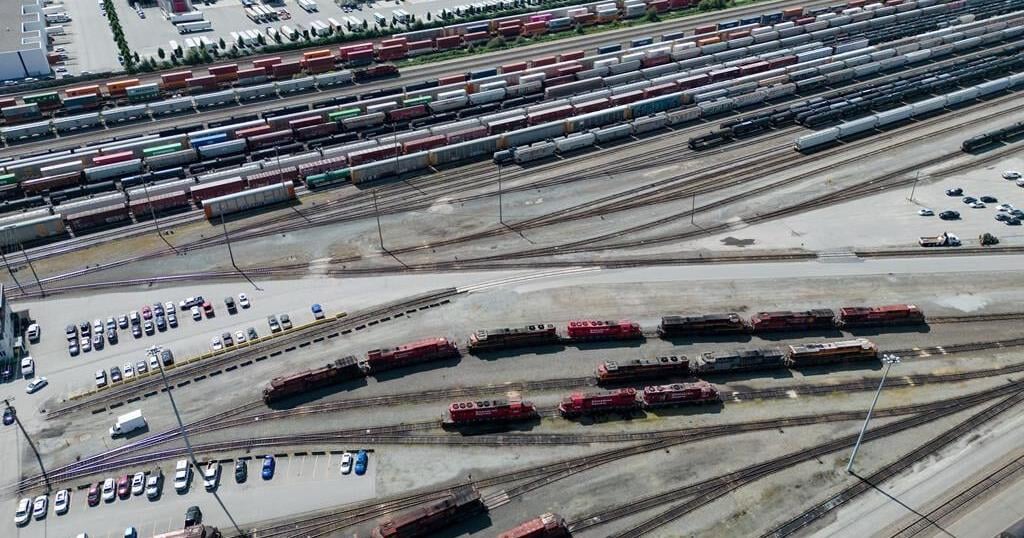MONTREAL – In a first for Canada, freight traffic on its two largest railways has simultaneously ground to a halt, threatening to upend supply chains trying to move forward from pandemic-related disruptions and a port strike last year.
In the culmination of months of increasingly bitter negotiations, Canadian National Railway Co. and Canadian Pacific Kansas City Ltd. locked out 9,300 engineers, conductors and yard workers after the parties failed to agree on a new contract before the midnight deadline.
The impasse also affects tens of thousands of commuters in Toronto, Montreal and Vancouver, whose lines run on CPKC-owned tracks. Without traffic controllers to dispatch them, passenger trains cannot run on those rails.
Pressure from industry groups and government to resolve the bargaining impasse has been mounting for weeks, with calls to hash out a resolution likely to ratchet up further now the work stoppage has begun.
The companies haul a combined $1 billion in goods each day, according to the Railway Association of Canada. Many shipments were pre-emptively stopped to avoid stranding cargo.
Parties bargained late into the night Wednesday at hotels in Montreal and Calgary before talks broke off shortly before midnight.
Each side has accused the other of failing to negotiate seriously.
“The railroads don’t care about farmers, small businesses, supply chains or their own employees. Their sole focus is boosting their bottom line, even if it means jeopardizing the entire economy,” claimed Teamsters president Paul Boucher in a statement early Thursday morning.
Bargaining played out in separate negotiations between each company and the Teamsters, which represents 6,000 CN workers and 3,300 CPKC workers.
CN said it has negotiated in good faith over the past nine months.
“The company consistently proposed serious offers, with better pay, improved rest and more predictable schedules. The Teamsters have not shown any urgency or desire to reach a deal that is good for employees, the company and the economy,” CN stated.
CPKC called for binding arbitration, saying the union has made “unrealistic demands.”
Business groups have also demanded the government step in by imposing binding arbitration and barring strikes and lockouts as the process plays out.
Prime Minister Justin Trudeau called on both sides on Wednesday to work out a deal at the bargaining table.
Affected industries include agriculture, mining, energy, retail, automaking and construction. U.S. railways have also had to turn away Canada-bound shipments.
Shippers south of the border also rely on Canada’s two main railways, whose tracks run to the Gulf of Mexico and, in CPKC’s case, to several Mexican ports.
Meanwhile, Canadian ports fear containers will pile up on the docks as cargo goes unmoved, causing congestion down the line and prompting some carriers to reroute to U.S. terminals.
More than 32,000 rail commuters in Toronto, Montreal and Vancouver will also have to find new routes to the office.
Lines affected by the potential work stoppage are TransLink’s West Coast Express in the Vancouver area, Metrolinx’s Milton line and the Lakeshore line’s Hamilton GO station in the Greater Toronto Area, and Exo’s Candiac, Saint-Jérôme and Vaudreuil/Hudson lines in the Montreal area.
This report by The Canadian Press was first published Aug. 22, 2024.
